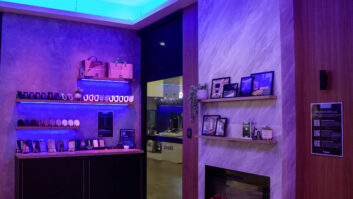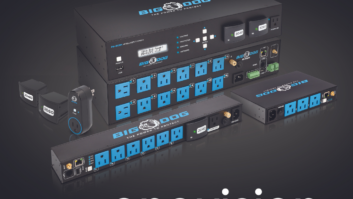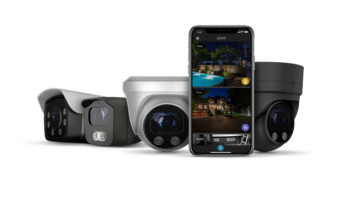Some mark the end of the first half of the year by the calendar date of June 30. However, around here, the midpoint is set by the last major trade show of the first half of the year, the annual Electronic Entertainment Expo, commonly known as E3. The show has had its ups and downs over the years, with the focus on hardware some years and software in others. Sometimes it is on the use of game consoles as streaming media consoles, while in other years it is “games, games, and more games.”
To summarize this year’s event, held in mid- June at the Los Angeles Convention Center and surrounding venues, we can say it had an interesting mix of all of the above, though that requires a bit of dissection and analysis. And, as is almost always the case when hardware is in the mix, there is also some attention to be paid to what wasn’t talked about or on display.
Most prominently, at least from what was detailed at the major console-maker events from Sony for PlayStation and Microsoft for Xbox, there was absolutely no mention of anything having to do with 4K/UHD. To be precise, that “no” is virtually all inclusive: No upgrade of the Xbox One or PS4 streaming services to include access to native 4K content from Netflix or others. No upgrade of the hardware to take the jump from HDMI 1.4 to HDMI 2.0a and from HDCP 1.x to the HDCP 2.2 version required by the content owners for virtually all native 4K content. Similarly, without the jump to HDMI 2.0a, there will be no way that the streaming services’ plans to deliver content with HDR may be accommodated.
More “no” or “nowhere in evidence” at this year’s E3 was any new Xbox games that used Kinect, and no new Sony games that required Move. (Yes, the Move wands will be part of the package for Sony’s Morpheus VR headset, but no standard games are using Move.) On the audio side, there was no mention of anything to do with serving our audio content from any of the high-resolution audio services and no mention of games that will take advantage of object-based audio formats such as Dolby Atmos, Auro 3D, or DTS:X.
The latter is particularly a shame, as the ability to move an object around in the audio space independent of other parts of the track would seem to be a very compelling application. It was not discussed, but one can only presume that even with the fairly powerful processors used in the Xbox One and PlayStation 4, this type of audio manipulation may just be as much beyond their limits as 4K rendering appears to be.
Another “no show” at E3, other than a passing mention in an online broadcast, was any news on Nintendo’s next-generation console, currently codenamed Nintendo NX. In fact, the only mention of it was a statement from the head of Nintendo America, Reggie Fils-Aime, that there will be no info on it until 2016, pointing to an introduction at next year’s E3. This is particularly relevant, with the admission in the obituary issued on the passing of Nintendo’s global president and CEO Saturo Iwata in mid-July that the current WiiU was part of Iwata-san’s “weakest” periods, while the original Wii was part of his “strongest.” Acknowledging what to all appearances is a failure is unusual, but it does speak to the need for a new console from Nintendo. Just not for a while.
Lest one read these “no” statements as signifying that there was nothing new at E3, that was far from the case. Further, some of what was there will indeed influence what you do for your clients in the months ahead.

As demonstrated in prototype form at Microsoft’s E3 press event, the company’s Mixed Reality concept imposes the rendered images from gameplay over the real world.
One theme that was a continuum from the past E3 or two was best expressed at the Microsoft event. One of its executives summed up, to their way of thinking, what E3 is all about: “The characters, the games, and the stories people love…” That definitely was the case across the board for all three of the major console systems and the games announced for them over the next six months or so. Since we’re more about the hardware than the software here, we’ll leave descriptions of the games, themselves, to others. However, the way in which software is accessed does, and will, affect the networking you provision where a game console is present.
One of the major announcements from Microsoft is that it will begin to offer backward compatibility for the Xbox One system, so that it will be able to play a select list of games currently available only for the Xbox 360 system. Expect at least 100 games from the last system that will be able to play on the new one by “the holiday season.” This will happen first with digital-download access, with physical media compatibility later. Does a client household with an active gamer have a stash of old games now relegated to a back closet? If you’re redoing the “front of house” area of the gaming room, you may be able to help them with more disc storage as the older games come back out front. And, of course, this is a good reminder that the networking can never be too fast and too reliable!
Networking power will also come in handy as game downloads begin to come not only from Microsoft’s own portal, but also from publishers such as EA, with its EA Access, as well.
With Windows 10 available as a free upgrade to existing Windows 7 and Windows 8.1 computers as you read this, be aware that Microsoft will use the new OS to further intertwine PCs and the dedicated Xbox One console. As an example, Xbox One games will stream to the Oculus VR system via Windows 10, and an increasing amount of games will allow interplay between the console and a PC. To unify and simplify play, the new Elite controller from the Redmond giant will work with both Xbox and PC.
Bottom line on all of this: Where gamers have traditionally had an affinity for either console or PC games, the arrival of Windows 10 may well finally bring more crossover. Therefore, where a room or system might have had one or the other, this may be the year when you’ll need to install whichever game system isn’t “in play” now.
Once again, this isn’t a big deal in the macro sense, but your role is to consider the micro-level issues that the client or a less skilled designer/installer won’t even realize are there. For example: matching the controller to the system and providing charging power and networking. For example: media storage. For example: anything needed to prevent data or wireless collisions when everything uses the same frequency, passwords, and similar. As always, that is where you show your value.
Echoing Microsoft, its take on things may have been summed up in the opening statement that PS4 will provide “a reality where games and gamers come first.” Again, as with Microsoft (and, to a lesser extent, WiiU) the consoles remain a streaming services hub. At E3 it was all about the games with little mention to electronic delivery, outside of access to games and game-related content or data. However, it is worth noting the expansion of Sony’s PlayStation Vue cloud-based service to Los Angeles and San Francisco, and that Showtime, Fox Soccer Plus, and Machinima will be added to the lineup. For those installations where “cord cutters” will be able to use this alongside Hulu for live, catch-up, and on-demand TV, perhaps the game console does have potential (where the service is available).
And, yes, Sony is also on the bandwagon of tying console games to PC platforms, though without the more specific tie to an OS that Microsoft has. There was, however, nothing with the specificity of the tie to Windows 10, or, for that matter, OS X.


Augmented or “mixed” reality uses a head-worn device to show a virtual world superimposed over the real world, and allows it to react to game play or user motion. Microsoft demoed this at E3 using a special version of Minecraft.
The Virtual Reality Story
Beyond the obvious announcements of forthcoming game titles for the various consoles, the most widely reported aspect of E3 in the popular press was what it broadly put into the category of virtual reality. The heightened attention to VR will definitely have some effect on how you plan for game spaces, well beyond the “oohs and ahhs” over it seemingly everywhere else.
Before getting into the hardware and software specifics, a bit of a definition is required. VR is an artificial environment–with sound and imagery rendered out by a console, computer, or mobile device–that a user experiences through a headset. You may control it by head movement, with a controller, with “wands” (as in the case of Sony’s Morpheus), or both. However, when using a VR product you do not see any of the real world around you.
Augmented Reality, on the other hand, is a bit different. Here, it is part of the concept that you do see what is around you with content overlaid on the real world. At its E3 press event, Microsoft demonstrated HoloLens in a gaming context with MineCraft and dubbed the total package “Mixed Reality,” which is an even more accurate nomenclature.
It also bears mentioning that at this point, post-E3, that here is no single standard for VR, as some games will work only on some systems or consoles with a specific VR product. Similarly, some VR viewers will work with all consoles and computers, while others are tied to specific hardware platforms. That means that your gamer clients may end up investing in more than one VR rig, or perhaps you will need to help guide them by working backwards. (Which console do they prefer and have? Which types of games do they play?) Then, see which matches with which VR and you’ll get the answer.
Although Oculus has garnered the most publicity for Rift, we were surprised to see all the demos in the main part of the company’s E3 booth using the Samsung Gear VR, which is an Oculus-compatible rig using a Samsung Galaxy S6 or Note 4 phone for the screen. If you want to experience the Rift but can’t wait until next year, this is the quickest and easiest way to do it, but as noted above, the novelty may be fun, but check to see if there is sufficient compatible content to satisfy the client.
The other widely reported VR product shown at E3 was Sony’s Morpheus. Lighter than a Rift or Gear, it bears a striking resemblance to the Viewer worn by LeVar Burton’s character Geordi La Forge in Star Trek: The Next Generation. In Sony’s words, it will “transport you into new worlds that wrap your senses in you-have-to-see-it-to-believe-it 360-degree environments.” Perhaps; and we’ll test that notion out when it is available next year.
Microsoft upped the ante at E3. Demonstrating AR, or again, as it preferred to call it “Mixed Reality,” the company showed how a special version of MineCraft will allow the player to look at a table in the real world and use the combination of game software and the HoloLens to have the built-up, gameplay- created world appear to the gamer over objects in the real world. The results were impressive, indeed.
Keep in mind that most of the game titles and hardware shown at E3 won’t be available for at least another six months, and that pricing, for the most part, has not yet been announced either. We say that because preparation for the new world of VR, AR, or Mixed Reality will require some planning on your part for design and installation.
Getting Clients Ready
The first thing you’ll have to consider is the physical space the gamer will be in. In the past we have suggested spotlighting for gaming, so the players can see what they are doing, be in range of any Wii Bar, Kinect, or PlayStation Eye that may be required. With VR removing the gamer from reality, that all changes.
First, note that the disassociation from reality may cause vertigo, motion sickness, or both. Should VR gamers play standing up or sitting down? We saw both at E3, but sitting seems safer. In fact, for the elaborate gameplay surfaces shown at E3, where the participant wears conductive shoes and stands on a surface so that the game reacts to foot movement along with head movement and manipulation of controllers or other game devices such as faux guns, the gamer was literally strapped and secured into the rig to prevent him or her from falling. Before provisioning VR for a client, this points to the possibility that, without prying, you carefully ask if anyone in the household is prone to bad reactions to this sort of activity. Plan the gameplay space accordingly whether it is for “game chairs” or something else.
A second, and equally important system consideration for VR (and AR) is audio. Being locked into an artificial world, room-based speakers might not be appropriate. (When there is more than one player, each participant’s world may present different sounds from different directions.) Large, immersive games will require better audio, and headphones seem to be the best bet. “Better audio,” however, does not necessarily mean that you break out the high-end headphones used for high-resolution audio. “Gaming headsets” are special in that they often have unique and specific connections to the game controller, specific amplifier configurations on the controller, and almost always a microphone for communication with other players.
Some of these headsets will come from familiar brands such as Polk and Plantronics with their Rig series, while others will come from game-specialist brands such as Turtle Beach and Astro. While in-ear buds are not a good choice for gaming, leaving the choice to on-ear or full, over-ear, more than one expert we asked at E3 suggested that open-ear (foam-type) headsets may be best for VR, as they might alleviate the possibility of nausea from the isolation of VR game play.
Leaving this year’s E3, I was mixed with a bit of both disappointment and excitement. Disappointed that the things that move the meter for our part of the industry (4K/UHD and HDR for better image quality, and the advanced versions of HDMI and HDCP that support them, and object-based audio formats were totally absent from the scene either as a part of games or as an addition to the available streaming services). Excited for the moving target that working with VR and AR will be, and the challenges and benefits they will bring. Whether or not this year’s E3 news will cause you to do anything specific in the short term, we commend you to take note of how the landscape will inevitably change between now and next year’s E3.







